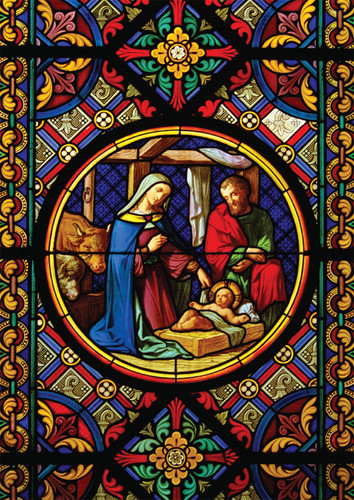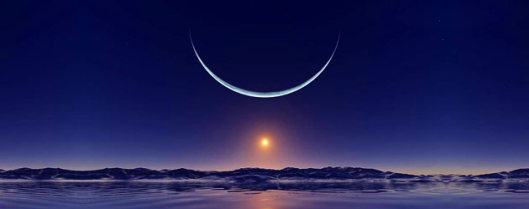In Christian communities around the world, we are celebrating the birth of Jesus. The countries that house these communities are also celebrating a secular version of this holiday as well. It has been this way from the 4th century AD. The birth of Christ was set on December 25 in the 2nd century AD but early Christians concentrated on the passion and death dates as major celebrations. It wasn’t until Constantine himself converted to Christianity and declared that it would be celebrated throughout the Roman Empire that the birth date of Christ was celebrated. As it reached into various parts of the world, it absorbed prior traditions celebrated at the time of the winter solstice.
The winter solstice since ancient times had been a time to celebrate the longest night of the year and the turning back toward the sun. Many of these practices from bonfires, yule logs, decorated fir trees, the exchange of presents, charitable works, good deeds, to special food preparations, feasts and drinking, songs and stories had been in place long before the time of Constantine and they attached themselves to the celebration of Christ’s birth. The miracle of a savior from the beginning became a celebration in itself of the miracle of birth.
You might say, “how miraculous is a birth of a human being anyway?” After all, one is born every minute somewhere. Well, you can see a graphic of how a statistician arrived at the likelihood of any given person’s being born. Here is what is posted on the blog of the statistician, Dr. Ali Binazir here, the end result of which is just about zero. There are so many variables that two people will produce any given child that the odds that any one of us is alive is a true miracle.
What is likely is that the winter solstice has probably been a conception date if not a birth date for many people through the history of mankind. On the longest night of the year, when the world is cold, making love is a natural act for couples which has resulted in all those late summer births.
Many poets have written important birthday poems. Many celebrate famous people, many more are more general celebrations of individuals written by poets in commemoration of friends and family. Ted Hughes’ Birthday Letters are perhaps the most celebrated. Written at the end of his life, these poems are among his best and reveal intimate portraits of his relationship with his deceased wife and fellow poet Sylvia Plath.
In this season of short days, long nights, when we celebrate the birth of a savior with the birth of a baby in a humble place, yet a baby who would shortly be honored by kings, who became the light of the Christian world, my prompt is for you to create a birthday poem inspired by the miracle of birth itself.
Wishing all my fellow poets around the world great joy this time of year, a “happy” or “merry” Christmas and a healthy and prosperous New Year!
- Link the poem on your blog by copying its name from your address line.
- Click on Mr. Linky which will open a Blenza page; fill in your name and
paste the link to your poem. - Read and comment on your fellow poets’ poems.
- Join the poets in the pub by clicking on the Comments on this page.



Welcome to the pub today and Merry Christmas! I know it’s a busy time in all of your lives and to those who can write and read today I have so much admiration for you! It’s been a difficult year for me readjusting to home, trying to get everything that broke down after all these years repaired, and re-organizing my life with my childhood friend Ron who is living with me here. I have much to be thankful for and am grateful for reasonably good health, wonderful children, grandchilldren and good friends. I wish the best for all of you. Thank you for your poetry, for being you, and for your willingness to carry on this tradition of poetry here at dVersepoets Pub. Thank you!
smiles… good evening gay… birthday poems seem to fit just perfectly into the christmas time…. looking forward to read what people are coming up with…
Gay, have a lovely Christmas–enjoy the changes life brings. We’ve had the same kind of year as you, it seems. Thanks for being you.
Gay, thank you for bringing this wonderful prompt to us. This is a great time sum up a year, looking back and also to the future. Also a merry Christmas and best wishes for next year to everyone. I’m At a jazz-concert and will do my rounds when I get home.
nice…I would love to be enjoying some jazz….
It was very nice.. a nice night filled with traditional jazz…
Love jazz..as much as classical..even as much as blues.
Congrats for hosting the last MTB for 2014. Yeah, your prompt is wide open cool, covering the virgin birth and/or specific birthdays, or birthdays in general. I had a good time with this one; but then I seem to have fun with each prompt sent my way! I struggled to make the link-up in time, but still made it in under #10, so that’s cool. Been a lot of landmark moments here at the Pub this year, perhaps 2015 will outdo even that. Happy holidays to all the pack of dVerse dog poets I love to run with.
very interesting prompt gay…it rather caught me off guard as I often think of the holiday …and the birth of Christ…but it was hard for me to think of birthday…took me a bit…but I got it…maybe a hard bit of reality to it, but I got it…smiles.
Loved it Brian – and Claudia who gave us a Christmas wrapped in a birthday, and Glenn who gave me the times of our lives. Bjorn – had birthday and seasonal words for the world!
Merry Christmas Gay – I am joining back in MTB after a long time – now that I am back in India, the time differences is creating bit of a trouble for me – I just finished my post, will come back tomorrow for reading….
Thank you for the great prompt.
hey – good to see you abhra… bedtime over here for me as well.. will catch up in the morning
Thank you Abhra – so glad to see you here again. Back home again. Hope all is well with you!
Ah.. Gay .. you found another poem that was written for another poem, summing up the year .. kind of birthday too.. but very very dark.. I think it actually fits so i link up that too..
somehow the links today had their own mind… just read your second poem but now the link is gone? changed your mind or is sth. wrong with mr. linky or probably i’m just too tired – ha – see you tomorrow morning..
I changed. my mind.. actually .. thank you for leaving the comment.. Just that Gay happened to comment on that one..
Loved your prompt, Gay. This came to me early morning–you will see why.
Your poem was beautiful, Victoria. Your work is always special.
What a fabulous PROMPT, Gay! Thanks…I missed Poetics and loved that prompt ( I was completeing a deadline piece AND LIFE happened…lol) But I am hoping to be back later to link…crossed fingers.
Looking forward to it!
hey… made my morning round and will be offline until saturday morning as i’m going directly from work to the company christmas party… see you then…
Have fun Claudia.
Hey Gay, Claudia and Brian–I am very behind here–and have just written a bread poem. I will put the link in this comment. I do not know if I will get to a birthday poem, but it is a very sweet prompt. http://manicddaily.wordpress.com/2014/12/19/give-us-our-daily/
catch up with you at lunch K…
hope you are well.
I completely understand K. It’s a busy time of year. I didn’t get a “bread” poem written, but I love the idea and did think how the history of food is also like a river that connects us past to future, yet reflecting what’s popular and available in our own time leaving a unique stamp on our recipes. Stay well and enjoy the holiday season. Wishing you a spectacular new year!
Thanks so much, Gay. Your kind wishes are much appreciated as well as your joyous and creative spirit. K.
Ha-ha.. miracles do happen.. i wrote a 69 word poem for Christ
mas. 😉
Nice prompt and Victoria’s poetry per her cloud inspired me to add some too..
as well as write.. as i’ve been falling short a little lately on prompts..:)
Happy Holidays.. by the way… 🙂
Loved feeling the dance you gave us KMF.